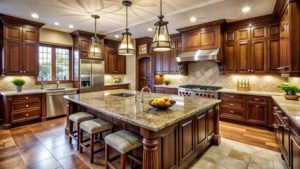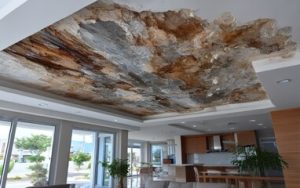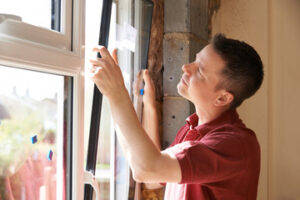Sacramento Cabinet Refacing allows you to upgrade your cabinets with a new door style, color, and hardware without changing the layout of your kitchen. This option is a more cost-effective alternative to full renovation.

Laminates are a budget-friendly option that are resistant to heat, moisture, and stains. They are available in a variety of colors and finishes and offer a sleek appearance.
Cabinet refacing is a cost-effective alternative to a full kitchen remodel. It can be 30-50% less expensive than replacing your cabinets, and it’s also a much quicker project. Plus, it doesn’t involve major demolition and construction, so you don’t have to deal with long periods without a functional kitchen.
While refacing is a great option for homeowners with limited budgets, it’s important to choose a contractor with the right skills and experience to ensure the highest quality. Labor costs account for a significant portion of the average cabinet refacing cost, and contractors with extensive experience typically charge more than those just starting out.
In addition to labor, you’ll also need to factor in the cost of materials. Different options offer different price points, but you’ll likely pay less if you select basic laminate over high-end wood veneers. Also, consider bundling upgrades to save money. For example, adding crown molding can be a great way to enhance your cabinetry’s appearance while saving money on the overall project cost.
Another factor that affects the cost of cabinet refacing is the amount of customization required. If you want to add more detailed elements like glass-front doors, moldings, or under-cabinet lighting, expect the price to increase. It’s also important to carefully weigh the benefits of these features against their increased cost and maintenance requirements.
Finally, consider the environmental impact of your cabinet renovation. Refacing is generally considered more eco-friendly than replacement, as it uses the existing materials and structure rather than creating new waste. By contrast, a complete replacement generates more waste, as well as requires additional resources to manufacture and dispose of the new cabinets.
However, while refacing offers many advantages over replacement, it’s not ideal for every situation. For example, refacing doesn’t address structural issues or major damage to the cabinet framework. If your cabinets are in poor condition, a complete replacement may be a better option.
Convenience
Cabinet refacing is a cost-effective and convenient way to upgrade your kitchen without replacing the existing cabinet framework. It is a great alternative to full kitchen remodeling, as it can save you 30-50% on materials and labor. It also helps to reduce the downtime associated with lengthy kitchen remodels, minimizing disruptions to your family life and lifestyle.
The process involves replacing the cabinet doors and drawer fronts with new materials like wood veneers or rigid thermofoils. This allows homeowners to embrace a wide range of styles, from traditional to modern. In addition, it allows you to add functional upgrades like drawer extensions and storage solutions for pots, pans, and other kitchen necessities. It’s important to empty the cabinets before the refacing project begins, as this will ensure the safety of your belongings and make it easier for the contractors to complete the job quickly and efficiently.
Aside from its cost-efficiency, cabinet refacing offers other benefits, including aesthetic appeal and improved resale value. The upgrades can help you compete with other homes in your neighborhood and attract more buyers. In a hot housing market, these cosmetic improvements can give your home a more polished, well-cared-for appearance and help you sell it faster.
However, refacing is not an ideal solution for all homeowners. It is not recommended if the existing cabinet frame is damaged or warped, and it cannot fix structural issues. It is also not the right choice for people who plan to reconfigure their kitchen layout. It is best suited for homeowners who are happy with the layout of their kitchen and just want a new look.
Refacing is also an environmentally conscious option, as it keeps old material out of landfills and conserves natural resources. It is more sustainable than a full-scale remodel or replacement, which creates a large amount of waste. It also saves energy, as homeowners are less likely to turn on their heating and cooling system to keep the space comfortable.
In contrast, a full kitchen renovation requires demolition and construction, which can increase energy usage in your home. If sustainability is a priority for you, cabinet refacing is the best option.
Durability
Cabinet refacing is an attractive option for homeowners looking to upgrade their kitchen without the costs and hassles of a complete remodeling project. The process typically takes just a few days to complete and offers a more subtle transformation than full remodeling, which can be disruptive to daily routines. It also allows you to keep your existing layout, saving time and money that would be spent on rerouting plumbing or moving appliances.
The lifespan of a cabinet refacing project is dependent on several factors, including material quality, professional installation, maintenance, usage, and climate. High-traffic kitchens and those with young children may experience more wear and tear, which can shorten the life of your refaced cabinets. Protecting cabinet surfaces from excessive moisture, ensuring proper ventilation, and immediately addressing any damages can extend their lifespan.
Another factor that can impact the lifespan of your refaced cabinets is the amount of heat they are exposed to. Some materials, such as wood veneers, are prone to warping or cracking when subjected to high temperatures. This type of damage can be difficult to repair and could leave your refaced cabinets with an unattractive look and feel. It is important to choose a durable, heat-resistant material such as solid woods or 3D laminate when refacing your cabinets.
Aside from durability, a Cabinet Refacing project can be an eco-friendly choice. Replacing your old cabinets with new doors helps reduce the use of resources and shrinks your carbon footprint. Furthermore, refacing can help increase the resale value of your home. This is because potential buyers focus on the kitchen and will be able to see how modern your kitchen is.
Despite its many benefits, cabinet refacing is not the right solution for every homeowner. Unless your current cabinets are damaged beyond repair, it’s best to hire a qualified professional to ensure the results of the project are up to standards. This is especially important for projects that require advanced skills, such as the application of decorative veneers. A professional will ensure the material is applied correctly and won’t peel or crack.
Customization
Cabinet refacing allows you to change the aesthetic of your kitchen without embarking on a full-scale remodeling project. With a wide variety of finishes and materials available, you can create a unique look that suits your style and preferences. You can also choose from a range of hardware to complement the updated design. This makes it easy to achieve a high-end look for your kitchen.
The quality of the materials used to cover your cabinets plays a significant role in elevating them to a luxurious appearance. Choose durable, long-lasting finishes that resist chipping and fading over time. Using top-of-the-line cabinet refacing is an excellent way to transform your kitchen and enhance the value of your home.
Many homeowners choose to use a wood veneer material for their cabinet refacing. This type of material is a popular choice because it can offer a luxurious and elegant look while maintaining durability. It is also easy to maintain, as it is resistant to moisture and heat. Another option is to use a laminate material. This type of material is more affordable than solid wood and offers a wide variety of color and pattern options.
You can also opt to use a different texture for your cabinet refacing, such as beadboard. This can give your Sacramento kitchen a classic, timeless look that never goes out of fashion. Beadboard can be easily repaired and replaced, making it an affordable cabinet refacing option that will last for years to come.
If you’re seeking a more modern appearance, consider opting for a thermofoil refacing material. This material is made from layers of paper, resins, and a protective clear coating. It’s available in a variety of colors, patterns, and textures that mimic the appearance of natural wood or stone. This material is easy to clean and is a great choice for homeowners who want to upgrade their kitchen without spending too much money.
The benefit of refacing is that it reduces your environmental impact compared to buying and installing new cabinets. By reusing existing cabinet boxes and replacing only the doors and hardware, you’ll reduce manufacturing and transportation emissions, as well as waste. Additionally, refacing uses less wood than painting, which makes it an environmentally friendly option for homeowners who prefer to preserve the environment.





